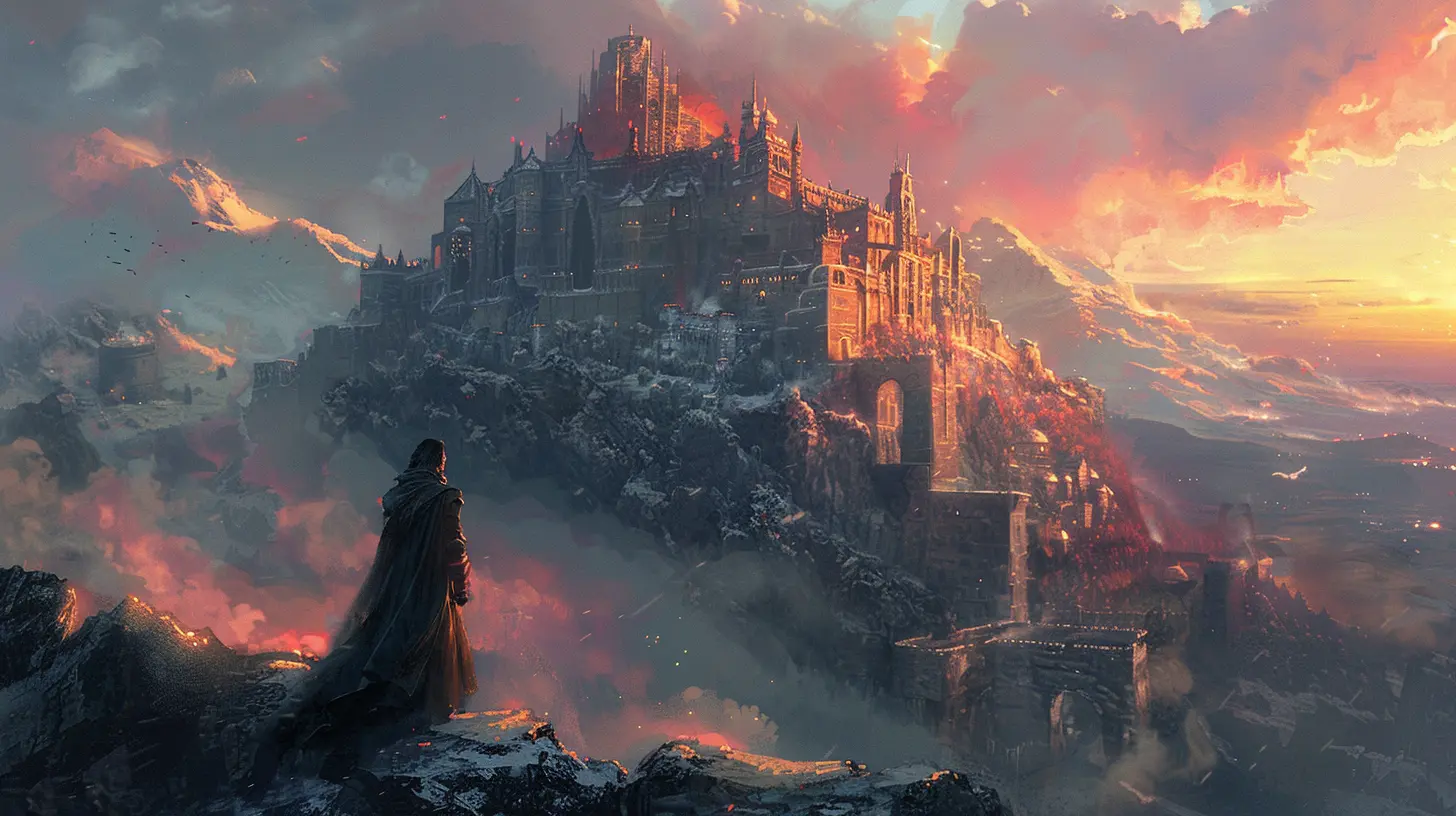How Developers Craft Memorable In-Game Quests
20 November 2025
Have you ever found yourself lost in a game—not just because of the open-world map, but because the story pulled you in so deeply that you forgot you were staring at pixels on a screen?
That, my friend, is the magic of a well-crafted quest.
From the thrilling battles of Skyrim to the gut-punching decisions in The Witcher 3, memorable in-game quests are what keep us glued to our controllers for hours. But the question is: how do game developers make that happen? How do they create those unforgettable moments that stick with us long after we’ve powered down?
Let’s dive into the world behind the screen and unpack how developers craft quests that truly resonate.
The Art of Quest Design: More Than Just Fetching and Fighting
Let’s be honest: not every quest hits gold. Some are just glorified shopping lists—“Go there. Kill that. Pick this up. Bring it back.” You know the drill. But when a quest is done right? It’s storytelling magic combined with interactivity.So what separates the boring from the brilliant?
1. Starting with a Strong Narrative Foundation
Great quests are built on stories worth telling. A memorable quest isn’t just about the objective—it's about why you're doing it and who you’re doing it for.Developers often begin with lore. Whether it’s rich world history or deep character backstory, the tale should serve a purpose in the broader universe. Think about "The Bloody Baron" questline from The Witcher 3. On paper, it’s about finding a missing person. But underneath, it’s a tragic tale of a broken family and the consequences of abuse.
Big difference, right?
This level of storytelling transforms an ordinary mission into an emotional rollercoaster.
2. Designing Meaningful Choices
Gamers love feeling in control. And choice-based quest design feeds that desire.We’re not just talking about “Do you want to go left or right?” kind of decisions. We’re talking about real moral dilemmas—choices that carry weight and have ripple effects throughout the game.
Take Fallout: New Vegas, for instance. Depending on your decisions, you can change the fate of entire factions. That level of agency makes players feel invested and adds tons of replayability.
By allowing players to shape outcomes, developers create a personal connection between the player and the game world.
Building Emotion Into Every Objective
Let’s face it—killing ten boars won’t stir the soul. But if the quest is framed as saving a dying village from starvation, suddenly it matters.3. Creating Empathetic Characters
Whether it's a desperate mother, a mysterious stranger, or a talking sword (hey, anything’s possible), characters are the emotional anchors of any quest. Developers know this, and they spend time fleshing out characters with complex motivations and human flaws.Good characters spark empathy. Great characters? They make us question our own morals.
Remember Red Dead Redemption 2’s Sadie Adler? What starts as a minor NPC develops into one of the most compelling allies in the game—all because we see her evolve through quests and interactions.
The key here? Depth over quantity. A few strong characters always win over dozens of forgettable ones.
4. Tapping into Relatable Themes
The best quests echo real-world emotions and issues—love, loss, sacrifice, revenge. These universal themes create a bridge between the player and the virtual world.Games like Life is Strange shine in this area. They wrap heavy, emotional themes into everyday interactions—choices that feel hyper-personal, even if the setting is supernatural.
By grounding quests in human experience, developers make you care. And when you care, you remember.
Gameplay Meets Storytelling: The Perfect Blend
Crafting a killer quest isn’t just about the script. It’s about how the objectives, mechanics, and environments feed into the narrative.5. Designing Quests that Compliment the Game's Core Mechanics
No matter how compelling the story, if the gameplay is a slog, the quest falls flat.Developers work hard to align quests with what makes their game fun—whether it’s stealth, combat, puzzles, or exploration. They use quests as a vehicle to showcase mechanics without making them feel like tutorials.
For example, in Horizon Zero Dawn, quests rarely feel disconnected from gameplay. You're always using your tools—tracking animals, setting traps, hacking machines—in smart ways that make sense in the story.
When quests feel like a natural extension of what the game does best, everything just clicks.
6. Building Immersive Environments
Nobody wants to embark on a quest through a lifeless town filled with cardboard NPCs. The setting plays a huge role in how a quest feels.Developers often go the extra mile in creating environments that tell stories in their own right—weather effects, subtle details, background dialogues, even graffiti on walls. These cues add texture and make the world feel lived-in.
In games like Ghost of Tsushima, the environment practically is the quest. Following the wind, chasing a fox through the forest—it’s all part of the experience. The setting becomes a character in itself.
Pacing, Surprises, and The Element of the Unexpected
Let’s talk rhythm.Even the most gripping story will lose steam if it’s all peaks and no valleys. That’s why developers pay close attention to pacing.
7. Mastering the Flow
Great questlines often mix up their emotional beats. A high-intensity boss battle might be followed by a quiet, dialogue-rich character moment. This variation not only prevents fatigue but also builds anticipation.Think of it like a TV series. Not every episode is explosive—some are slow burns that build tension—and that’s by design.
By staggering quest intensity, developers create a rhythm that keeps players engaged from start to finish.
8. Throwing Curveballs
Unexpected twists can turn a basic fetch quest into something unforgettable. Maybe the item you’re retrieving is cursed. Maybe the person you’re helping is the villain. Maybe the whole quest was a dream. Who knows?These twists add spice and keep players on their toes. In games like Bioshock or even Mass Effect, entire narratives pivot on a single shocking revelation.
The best part? It makes you want to talk about it. And when players talk, your game lives on.
Collaboration: The Secret Sauce Behind Stellar Quests
We often picture a lone writer typing away in a dimly lit room. But in truth, quest design is a team sport.9. Writers, Designers, and Artists in Sync
It takes a village to create a great quest. Writers might draft the initial story, but then designers step in to decide how it plays out. Artists build the world and characters, while sound engineers layer in music and effects.For a quest to really shine, all departments need to work in harmony. It's not just about putting a good story in the game—it's about weaving it seamlessly into the gameplay, environment, and soundscape.
When done right, the result is a quest that feels like it belongs, rather than something tacked on.
Listening to Players (Yes, Really)
Last but not least—feedback matters.10. Iterating Based on Player Experience
Game devs aren’t just throwing darts in the dark. They analyze player behavior, read forums, watch YouTube playthroughs, and soak up feedback like a sponge.This data helps them understand what resonates and what falls flat. Sometimes this even leads to reworking future content or patching existing quests to fix pacing, bugs, or narrative inconsistencies.
And when developers listen? Players feel seen. That connection builds loyalty and trust over time.
Final Thoughts
Crafting memorable in-game quests isn’t just about epic dragons or explosions (though those are nice too). It’s about storytelling, emotion, gameplay harmony, and—most importantly—making players feel something.In a world where players can sink hundreds of hours into a game, quests are the threads that hold everything together. They give you purpose, challenge your morals, and reward your curiosity.
So next time you’re in the middle of a jaw-dropping questline, pause for a second. Think about the countless hours developers spent crafting it—not just to entertain you, but to move you.
And that? That’s the real quest.
all images in this post were generated using AI tools
Category:
Quests And MissionsAuthor:

Lana Johnson
Discussion
rate this article
1 comments
Zevonis Gilbert
Understanding player motivations and emotions is key to creating engaging and memorable quests.
November 20, 2025 at 5:58 AM


